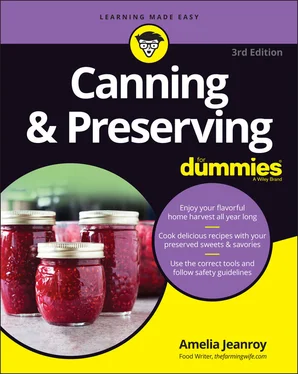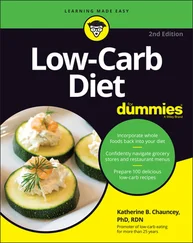269 273
270 274
271 275
272 276
273 277
274 278
275 279
276 280
277 281
278 282
279 283
280 284
281 285
282 286
283 287
284 288
285 289
286 290
287 291
288 292
289 293
290 294
291 295
292 296
293 297
294 298
295 299
296 300
297 301
298 302
299 303
300 304
301 305
302 306
303 307
304 308
305 309
306 310
307 311
308 312
309 313
310 314
311 315
312 316
313 317
314 319
315 320
316 321
317 322
318 323
319 324
320 325
321 326
322 327
323 328
324 329
325 330
326 331
327 332
328 333
329 334
330 335
331 336
332 337
333 338
334 339
335 340
336 341
337 342
338 343
339 344
340 345
341 346
342 347
343 348
344 349
345 350
346 351
347 353
348 354
349 355
350 356
351 357
352 358
353 359
354 360
355 361
356 362
357 363
358 364
359 365
360 366
361 367
362 368
363 369
364 371
365 372
366 373
367 374
368 375
369 376
370 377
371 378
372 379
373 380
374 381
375 382
376 383
377 384
378 385
379 386
380 387
381 388
382 389
383 390
384 391
385 392
386 393
387 395
388 396
389 397
390 398
391 399
392 401
393 402
394 403
395 405
396 406
397 407
398 408
399 409
400 410
401 411
402 412
403 413
404 414
405 415
406 416
407 417
408 418
409 419
410 420
411 421
412 422
413 423
414 424
415 425
416 426
If you’ve thought about canning and preserving your own food but haven’t tried it because you’re afraid it’s too involved, well, it’s time to set aside your hesitation. Today’s methods and procedures for home-canning, freezing, and dehydrating food are simple and easy. Many of the techniques may be similar to those your grandmother used, but you’ll find they’ve been perfected. In this book, you get all the information you need to can and preserve food safely.
Welcome to the wonderful world of canning and preserving. Consider this book your guide to discovering simple ways to preserve all the foods your family loves, without any mystery or confusion along the way.
This book presents four preserving methods — water-bath canning, pressure canning, freezing, and dehydrating — in an easy-to-understand format and walks you step by step through each technique. You don’t need any previous canning or preserving experience in order to start, or continue, your endeavor to become a first-class food preserver.
Within these pages, you’ll find information like the following:
What to look for to make sure you’re preserving the best, most fresh fruits and veggies.
A list of canning supplies and equipment (complete with illustrations), as well as instructions on how to ensure your canning equipment is in good working order.
What techniques help you preserve the best flavor in your foods and how to avoid spoilage and recognize it if it does occur.
Illustrations of different techniques and equipment along with tips for making your canning and preserving journey fun and rewarding.
A whole host of favorite recipes for your enjoyment.
Also, we use the following general conventions throughout the book:
Bold text means that you’re meant to type the text just as it appears in the book. The exception is when you’re working through a steps list: Because each step is bold, the text to type is not bold.
Web addresses and programming code appear in monofont. If you’re reading a digital version of this book on a device connected to the Internet, note that you can click the web address to visit that website, like this: www.dummies.com .
Whenever we introduce a word or phrase that may not be familiar to you, we put that word in italics. You can rest assured a definition or explanation is nearby.
The recipes in this book follow helpful conventions of their own. For example, most every recipe includes a preparation time, cooking time, processing time, and the yield you should expect from your efforts. Here are some details that apply to all of the recipes but aren’t repeated each time:
Use a vinegar with 5 percent acidity.
Use pure salt with no additives. (Canning or pickling salt is best.)
Cook all food in heavy-bottomed pots and pans.
Use nonreactive equipment and utensils (items made from glass, stainless steel, or enamel-coated steel or iron).
Use glass jars and two-piece caps approved for home-canning.
Always use new lids for canning unless you purchase reusable lids, which can be used for multiple canning seasons.
Start counting your water-bath processing time when the water reaches a full, rolling boil.
Begin counting your pressure-canner processing time after releasing air in the canner and achieving the required pressure.
All temperatures are Fahrenheit.
Note: All recipes and processing times are developed for altitudes at sea level to 1,000 feet above sea level. (For higher altitudes, refer to the altitude adjustment charts for water-bath canning in Chapter 4and for pressure canning in Chapter 9.)
Finally, to make the content more accessible, we divided it into 6 parts:
Part 1, Getting Started
Part 2, Water-Bath Canning
Part 3, Pressure Canning
Part 4, Freezing
Part 5, Dehydrating and Storing
Part 6, The Part of Tens
In writing this book, we made some assumptions about you:
You know your way around a kitchen. You’re familiar with basic cooking techniques and food preparation methods.
You’ve never canned or preserved food before or have relatively little experience with food preservation methods and want basic, easy-to-understand-and-follow instructions.
If you have canned and preserved food before, it was long enough ago that you want to find out more about the newer, safer, and easier techniques that are recommended today.
Perhaps most importantly, you want to stock your kitchen with more natural, healthier, homemade alternatives to standard supermarket fare.
The following four icons appear throughout this book and point out specific points or remind you of items you’ll want to be sure not to miss.
 This icon directs you to tips or shortcuts we’ve picked up over the years. The information here makes your work easier and more hassle free.
This icon directs you to tips or shortcuts we’ve picked up over the years. The information here makes your work easier and more hassle free.
 This icon means, “Okay, you’ve heard this stuff before, but the information is important and bears repeating.”
This icon means, “Okay, you’ve heard this stuff before, but the information is important and bears repeating.”
 When you see this icon, pay special attention. The information tells you about a potential problem and how to overcome or avoid it.
When you see this icon, pay special attention. The information tells you about a potential problem and how to overcome or avoid it.
Читать дальше

 This icon directs you to tips or shortcuts we’ve picked up over the years. The information here makes your work easier and more hassle free.
This icon directs you to tips or shortcuts we’ve picked up over the years. The information here makes your work easier and more hassle free. This icon means, “Okay, you’ve heard this stuff before, but the information is important and bears repeating.”
This icon means, “Okay, you’ve heard this stuff before, but the information is important and bears repeating.” When you see this icon, pay special attention. The information tells you about a potential problem and how to overcome or avoid it.
When you see this icon, pay special attention. The information tells you about a potential problem and how to overcome or avoid it.










